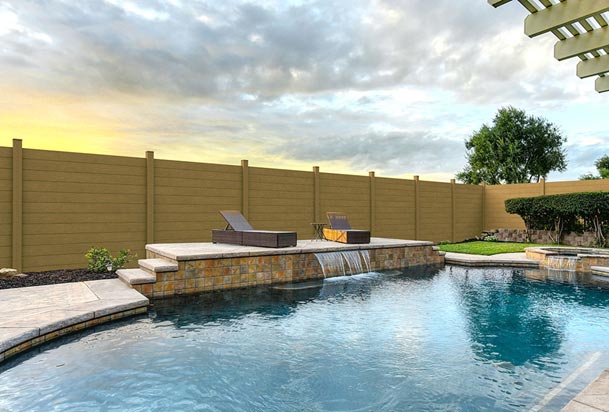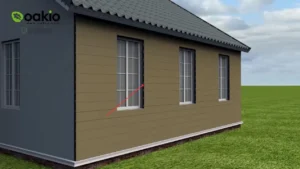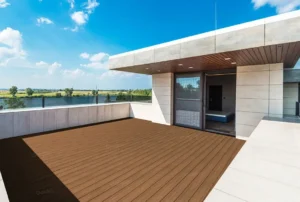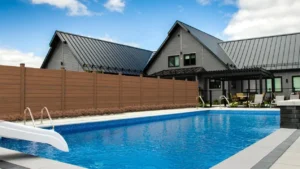How To Maintain Composite Fencing
If you’ve got composite fencing, you already know that this fencing system is naturally long-lasting, thanks to its sturdy materials. But it would live even longer if given tender-loving care through regular maintenance. A composite fence is made from a cocktail of plastics and wood fibers—making it solid and weather-proof. But it doesn’t mean it’s maintenance-free, it just means low-maintenance. The question is, how do you do just that? In this blog, we’ll teach you how to maintain composite fences and offer you our best tips so you can ensure your fence looks great and functions well for several years to come!
Do Composite Fences Need Maintenance?
Yes, composite fences still need maintenance. But compared to traditional wood fences, composite fences need less and shorter maintenance which saves you a lot of time, effort, and money in the long run. Thanks to the combination of plastic and wood fibers, this type of fence is also resistant to mold and mildew growth.
However, there are several factors to consider whether you need to do maintenance more often. If you find yourself in these situations, it’s better to do maintenance more than usual:
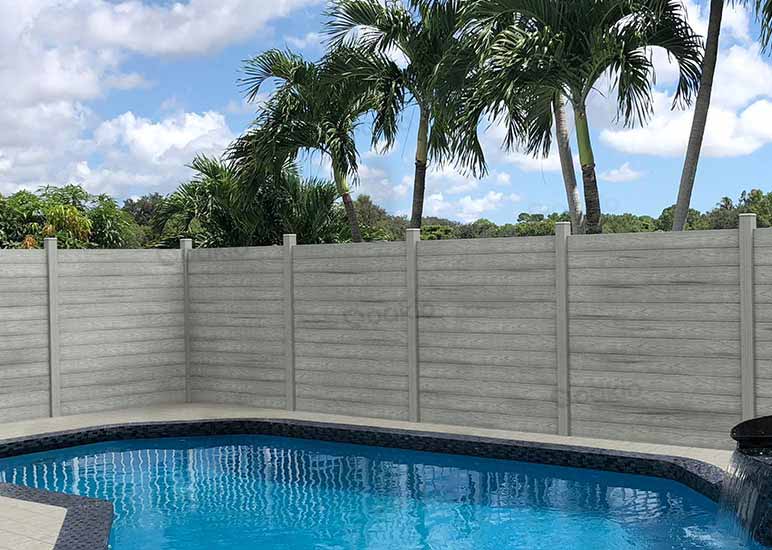
- Your area has a clay-type of soil. Clay soil becomes a dense type of mud when the rain comes, and cleaning it off your fence is tough.
- There are animals in your vicinity. Whether wild animals or your pets, we can attest that most animals aren’t fans of fences. Uncastrated male dogs, for example, love peeing on fences.
- You live in a humid area. Even though composite fence panels are resistant to mold and mildew, that doesn’t eliminate the threat of mold and mildew, especially in moist places.
- It snows in your area. The cold snow may weaken the materials of your composite wood fences and introduce mold and mildew when the snow melts and subsides.
How to Maintain Your Composite Fencing?
Doing general maintenance on your composite fencing is simple: you just need to clean it with soapy water, scrub it to remove contaminants, rinse it off, and allow it to dry. But there are situations where you’ll need to be more proactive and adjust your maintenance processes.
Snow and Ice
Removing snow and ice off your composite fence can be done in two ways: mechanically and by water. Let’s discuss the mechanical removal first: all you need is a plastic shovel to shave off ice and snow from the panels.
Using only a plastic shovel is important since metal can scratch the panels and leave a deep mark. As for removal through water, all you need to do is hose down the panels and allow the ice and snow to melt completely.
Mud and Dirt
To remove mud and dirt off your fence, you just need the following materials:
- Plastic brush with soft bristles
- Bucket of soapy water
- Water access, preferably hosed
Start by hosing down the fence, allowing the water to soften, and removing some contaminants. Then, bring your brush and scrub off the mud and dirt while pouring soapy water on the fences.
Once done, rinse the soap off by hosing it down.
Plant and Tree Debris
By far, the easiest things to clean off your fences. You can do these in two ways: get a broom or a blower and mechanically remove the debris, or hose down the debris. Choose whichever is easier for you.
But do note that you may need to do these often if you have plant pots directly resting beside your fence and trees within your fence’s vicinity.
Grease and Oil Stain
Hosted a backyard barbeque party, and your fence got greased and smeared with oil? You can clean it off with the following materials:
- Soft plastic brush
- Bucket of soapy water (you can use liquid dish detergent as it’s better when removing grease and oil)
- Hosed water access
Start by pouring soapy water on the grease and oil stains, and allow the solution to be absorbed by the fence panels for a few minutes. After that, scrub the stains using a soft brush and apply soapy water occasionally.
Once the stains are removed, hose the panels down to finish cleaning.
Mold and Mildew
Mold and mildew growing on composite fence panels are uncommon but not unheard of. If this happens to your fence, do the following:
1. Prepare a soft brush and soapy water solution (you can use any detergent that doesn’t have bleach as an additive).
2. Apply soapy water to the stains and scrub them off.
3. Once the mold and mildew stains are off, hose down the panels and allow them to dry thoroughly.
Chalk Marks
Removing chalk marks is easy; cleaning is the same as eliminating mold, mildew, mud, dirt, grease, and stains.
Bring your soft-bristled brush or sponge, soapy water, and water hose to clean off the chalk marks. You can even let the marks fade on their own after a few days, if not months.
But if you’ve done this cleaning process before and it didn’t go well, you may opt for a fence cleanser to remove the marks altogether.
Tannin Stains
Tannin stains are natural for wood-based materials since tannins are found in plants and trees. Sometimes, they become a cosmetic problem once the stain scatters. Thankfully, they’re pretty easy to clean.
The same cleaning process we’ve mentioned also applies to this type of stain. You just need to scrub the stain with a soft brush or sponge, use soapy water, rinse off, and dry the panels thoroughly.
Enjoy High-Tensile Fences With Oakio Fencing
At Oakio, we’re committed to bringing you high-tensile composite fences engineered with high-quality and nature-friendly materials. We offer two fencing products you’ll love to have on your property!
Should you wonder how to visualize your property with our fences, we offer a product visualizer, which we’ll discuss further below!
Oakio Composite Fencing
Our most affordable option is our Iniwood fencing system; we made the first-generation composite panels without any further pre and post-treatment to make them budget and DIY-friendly. Plus, our Iniwood fences come in 9 different colors you can choose from!
Aside from our Iniwood fences, we have the top-of-the-line ProShield composite fences—our second-generation panels masterfully engineered with the qualities you want: long-lasting and easy to maintain.
Our ProShield fences have a protective layer that shields against stains, dirt, scratches, mold, mildew, and even UV rays that cause panel discoloration!
Pro Tip: We prepared Oakio Product Visualizer, a helpful tool you can check out to visualize what your property will look like with our fencing system in place.
Frequently Asked Questions (FAQs)
How long does composite fencing last?
On average, composite fencing systems last between 20-30 years, with the upper numbers indicating regular maintenance and servicing. Top-of-the-line composite panels also tend to live longer than cheaper ones.
Can you pressure wash composite fencing?
You can, but we don’t generally recommend it since it can damage the surface of your composite fence. If you have no choice but to pressure wash, do it as gently as possible: spray at least 30 centimeters away, and do not exceed 3000 PSI.
Does a composite fence fade?
Every composite fence fades to a minor degree because natural oils in the wood get washed out by rain through weathering. UV rays also play a role in the natural lightening of the surface, but after 2-3 months, this lightening period gradually slows down and becomes stable.
Want To Go Composite? Go For Oakio!
Maintaining composite fencing is a relatively easy affair. You just need to prepare a few materials, scrubbing here and there, rinse off, and you’re done.
At Oakio, we pride ourselves on being the leading composite wood manufacturing innovator in making high-quality, easy-to-maintain composite fencing, decking, pergola, railing, and cladding systems.
So, if you want to go composite, all you need to do is contact us, and we’ll get your composite journey started!
Loved this blog? Subscribe to our newsletter today to catch exclusive deals and discounts, and be the first person to read our in-depth tips and how-tos when we publish them!
Trending Reading
What Are the Differences Between the WPC Board and PVC Board?
[2024 Update] How Long Does WPC Decking Last?
